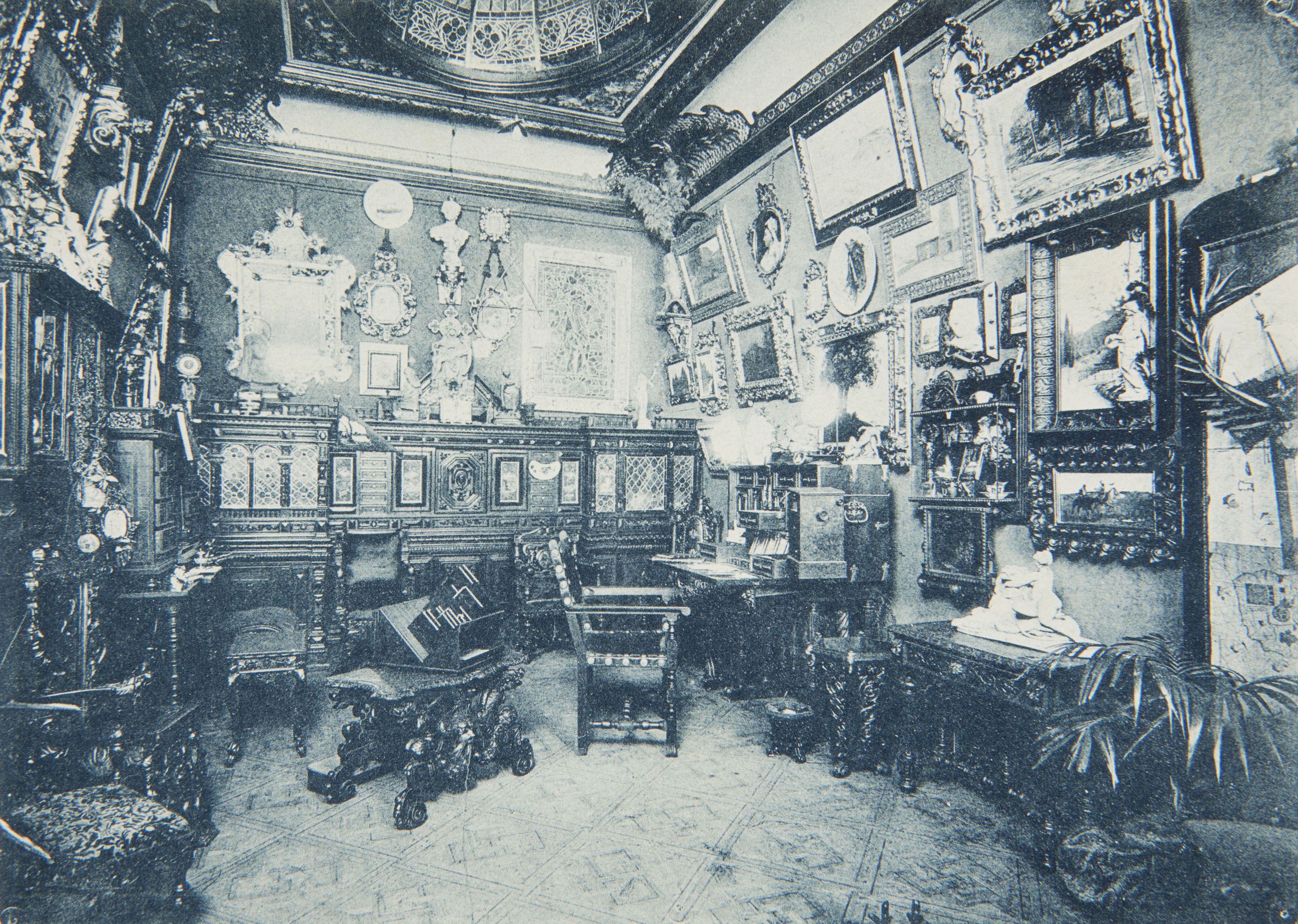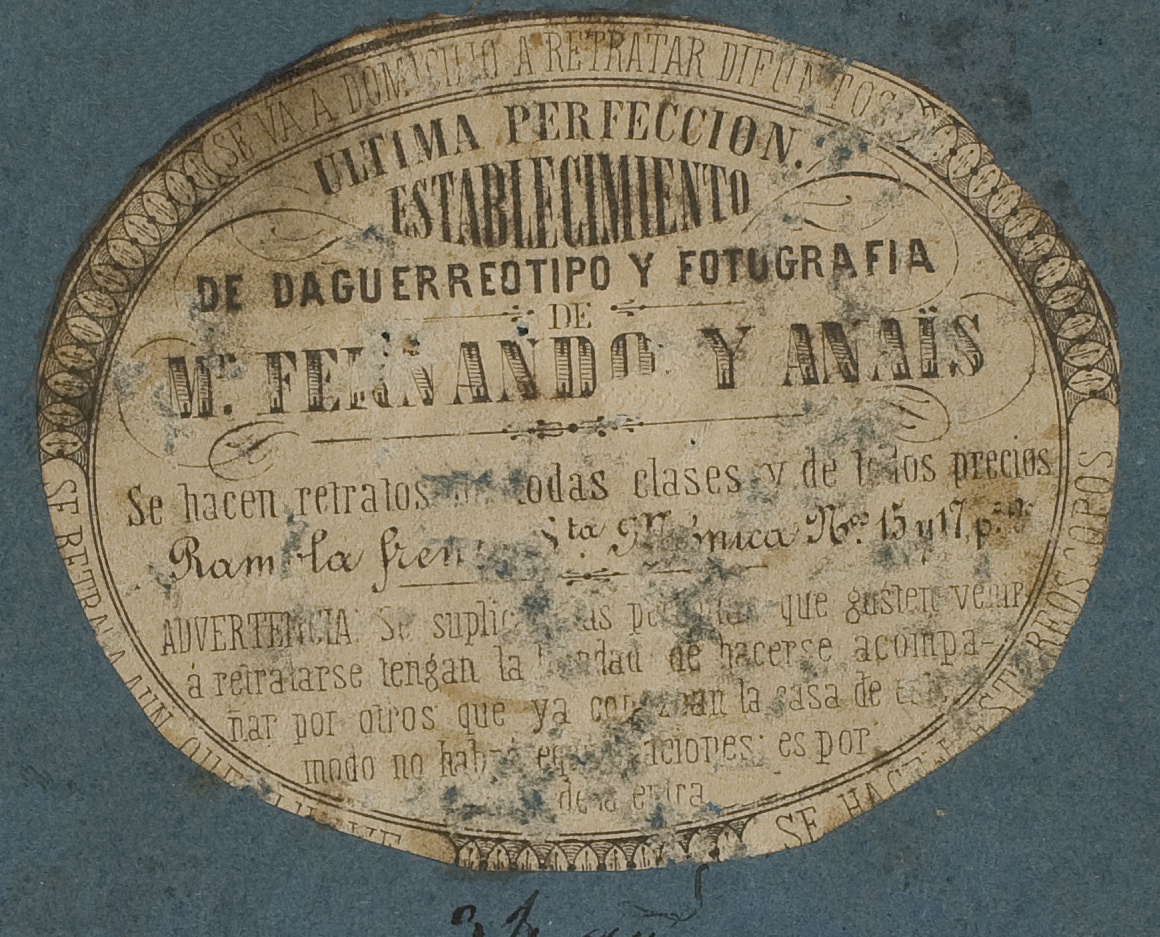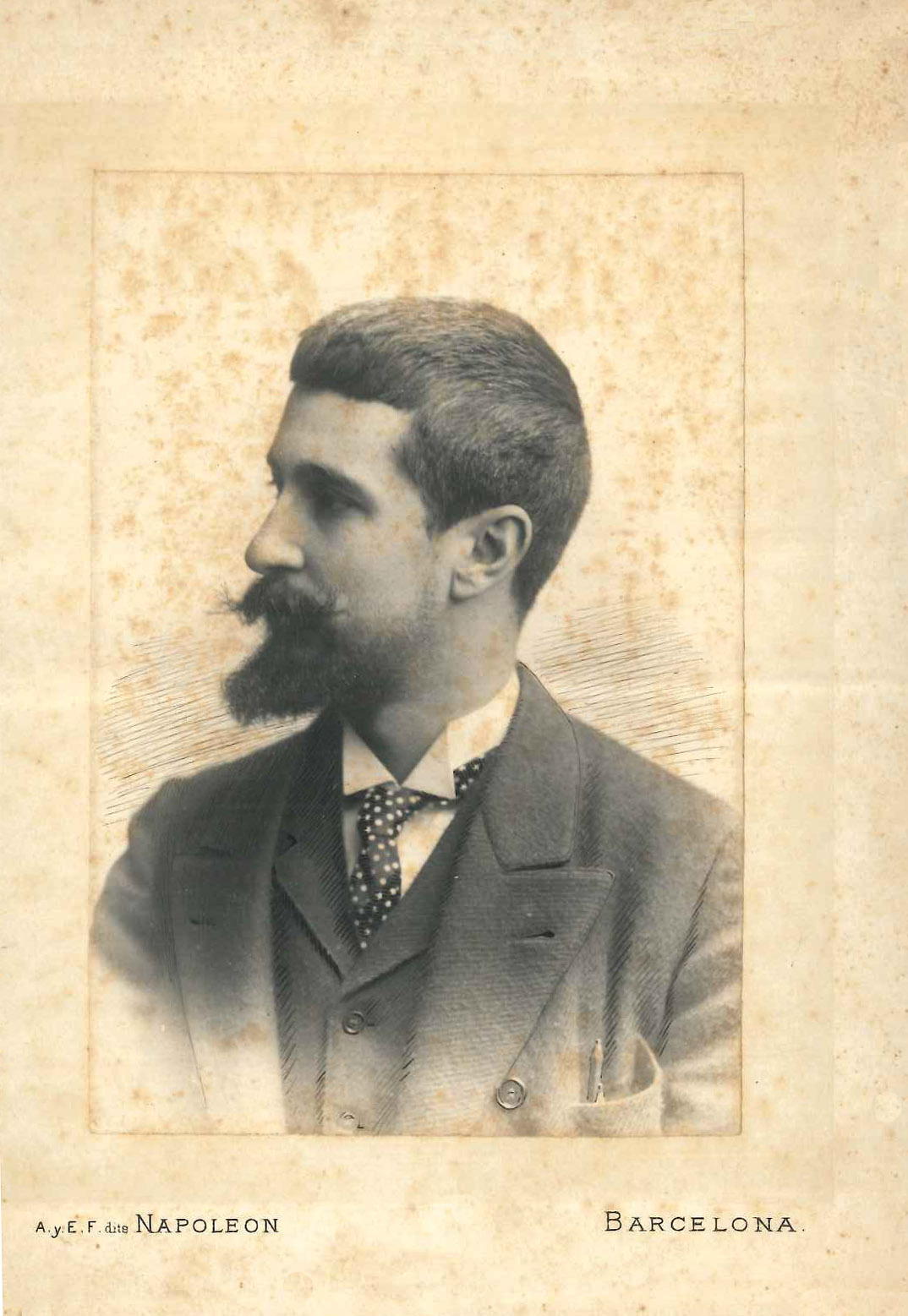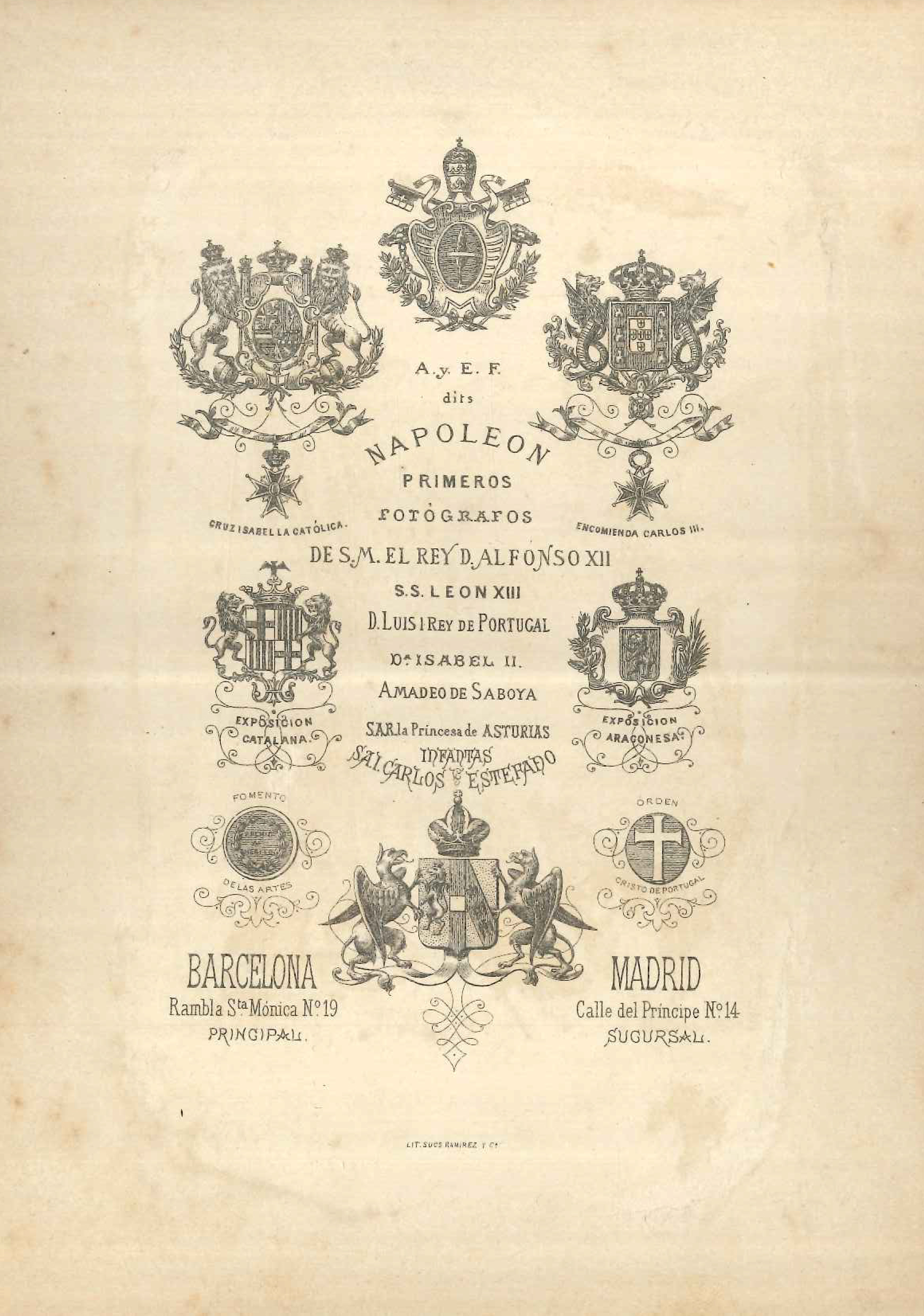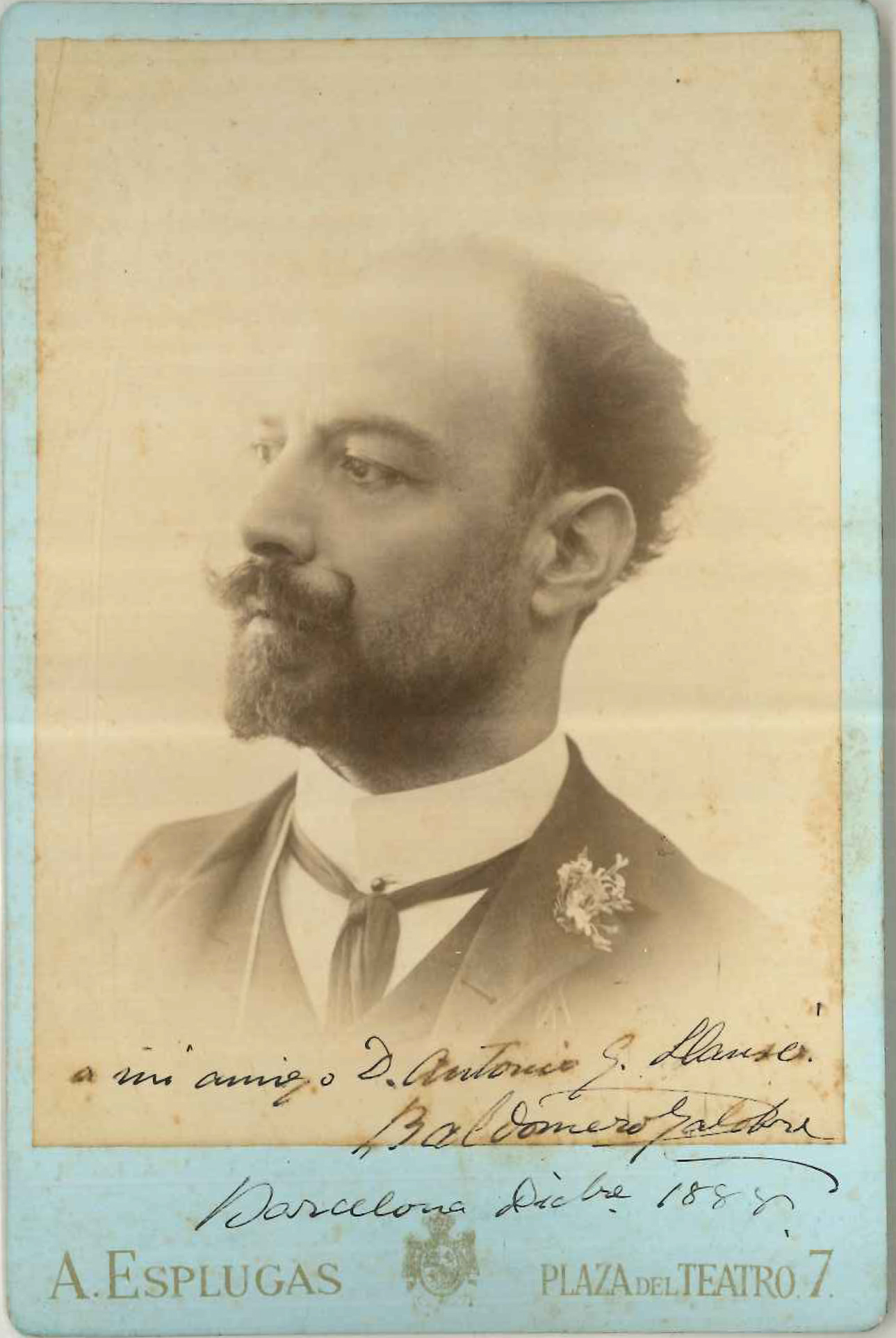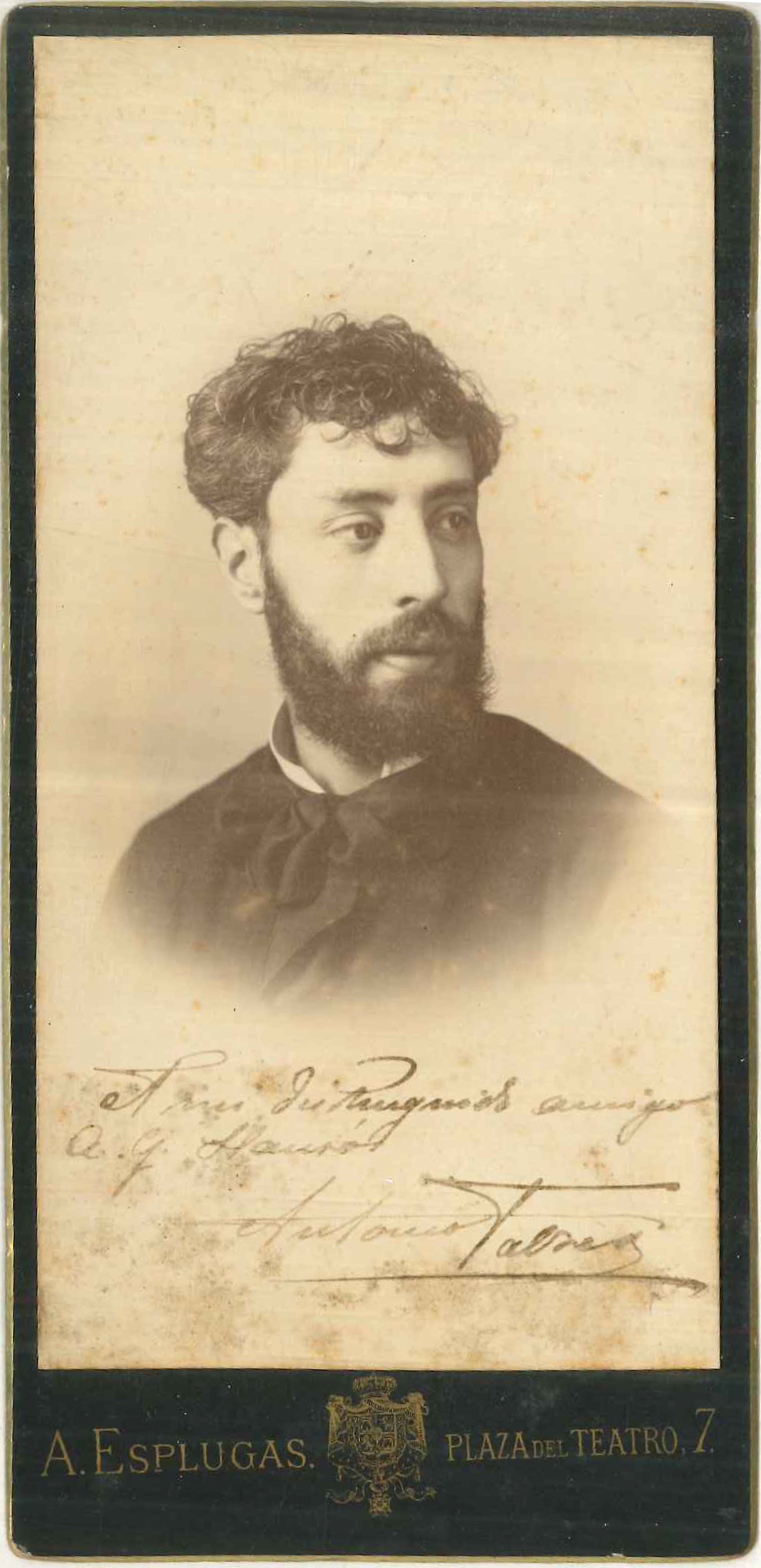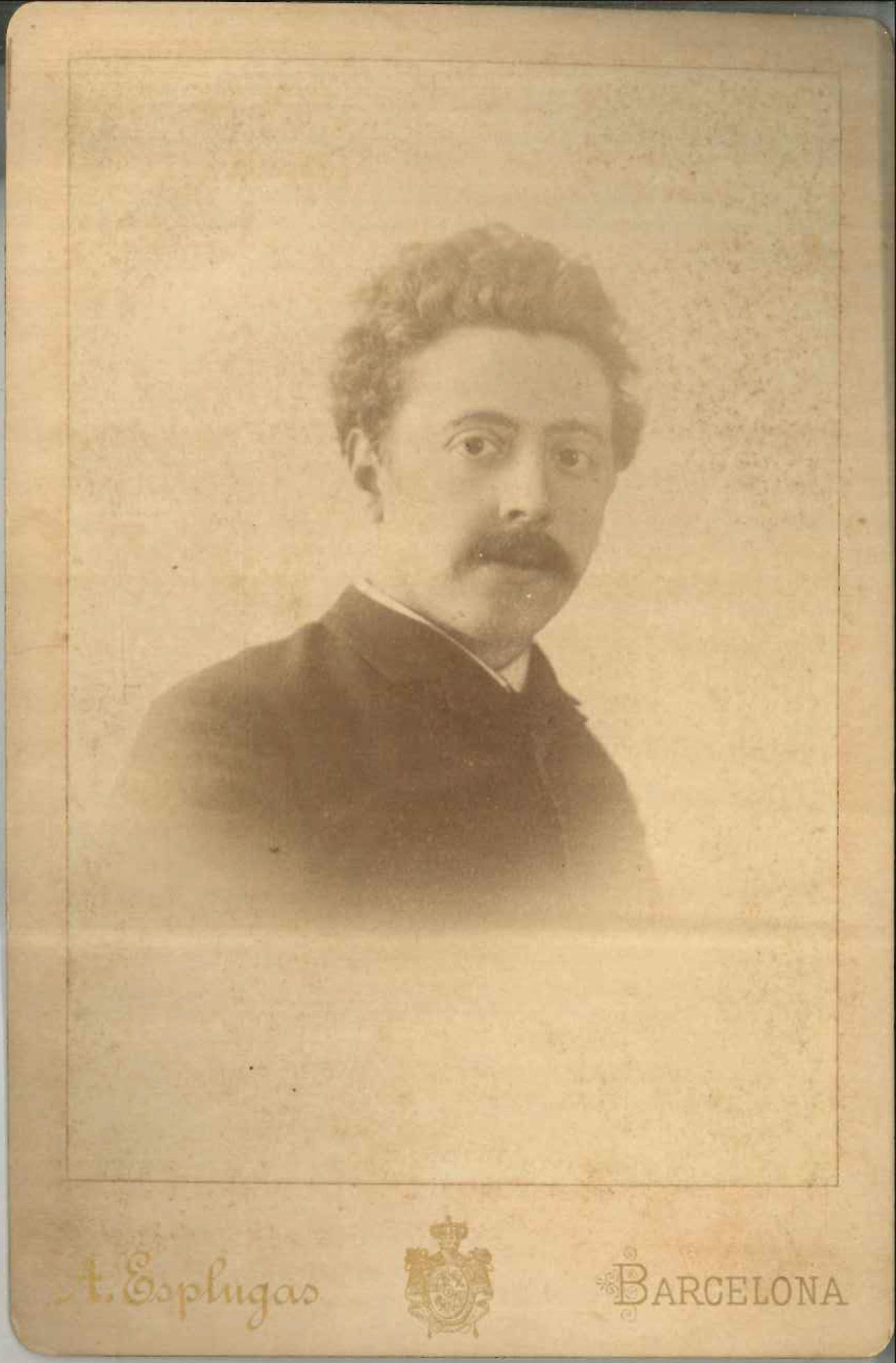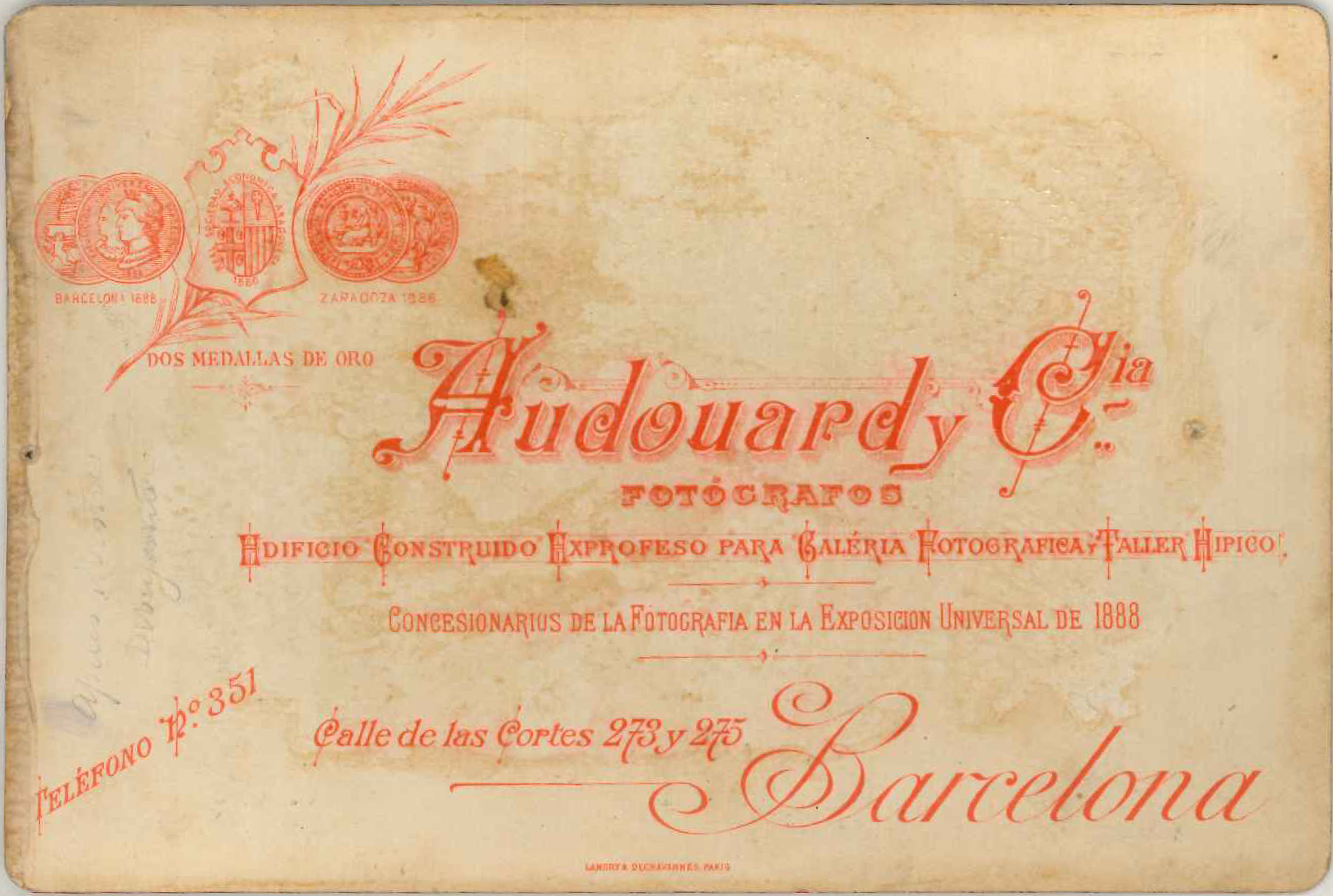Alícia Cornet
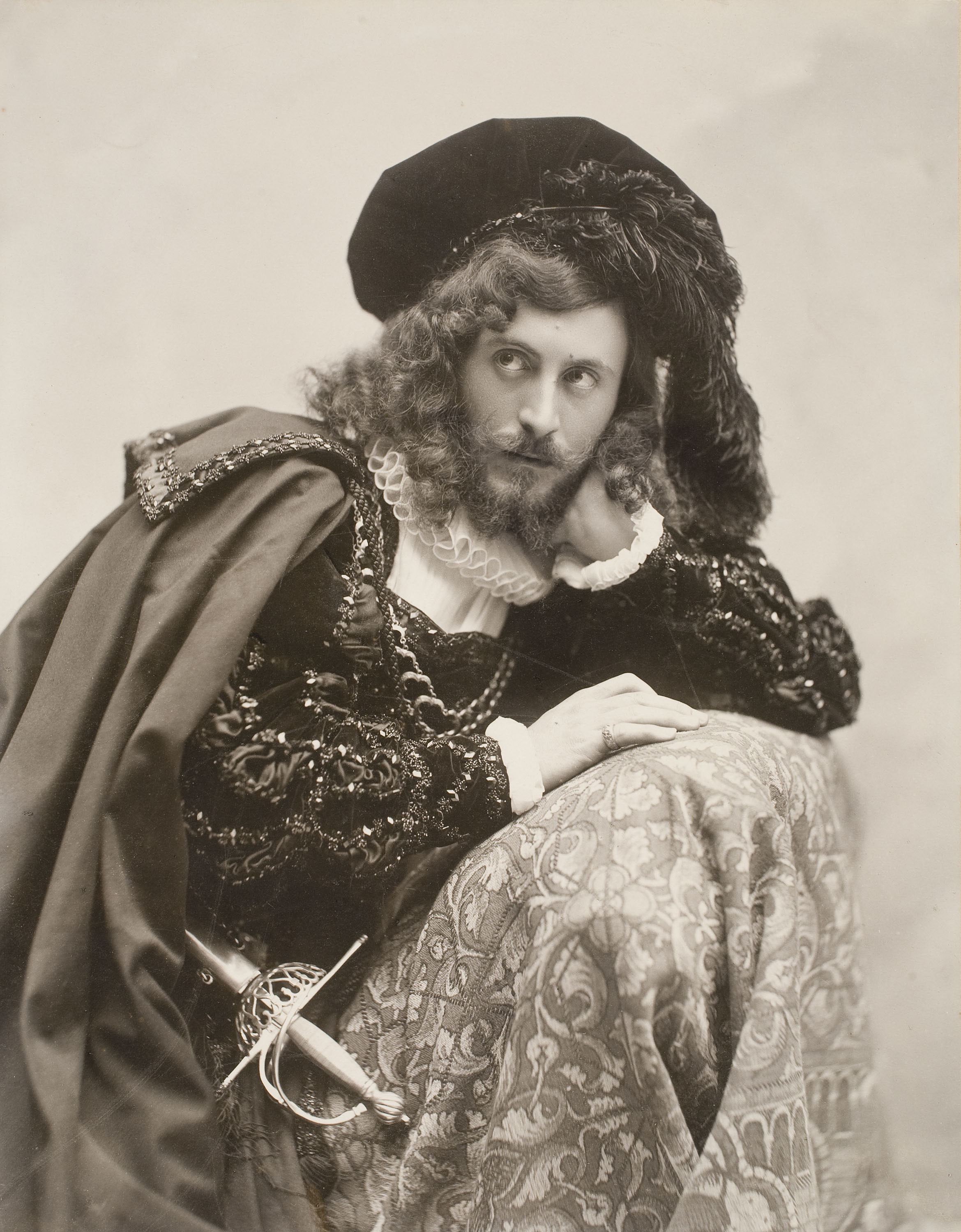
Pau Audouard, Portrait of Eusebi Bertrand Serra dressed as Hamlet, undated
The museum conserves a collection of portraits of artists taken in the most important photographic studios in Barcelona in the third quarter of the nineteenth century. In this article we shall talk about four of these studios: the Napoleón, and those of Antoni Esplugas, Joan Martí Centellas and Pau Audouard.
Photographic innovations
Three innovations were introduced in the photographic process midway through the century. Wet collodion, the visiting card format and albumen paper were the contributions that revolutionized the field of photography and contributed to the success of the portrait in the society of the time.
In 1851 Frederick Scott Archer managed to produce a negative on glass thanks to the use of wet collodion as an agglutinant of the silver salts. Three years later, Eugène Disdéri patented a new photographic method that made it possible to obtain eight portraits on the same glass negative. The negative was developed by contact on a sheet of albumen paper and the result was a print with eight portraits, each measuring 5.4 x 8.9 cm that, once they had been cut out and stuck on to cardboard, formed the visiting card. Other sizes soon appeared, such as the cabinet (16.5 x 11 cm), the victory (12 x 8.3 cm) and the promenade (21 x 10 cm).
The increased popularity of photography with the introduction of the new techniques helped to lower production costs and resulted in greater demand for portraits. This led to new photographic studios opening in every large city in Europe, including Barcelona. The studios were concentrated in Les Rambles and the nearby streets.
The Napoleón studio
One of the workshops that best reflects the success achieved by the portrait among Barcelona society at the time was the Napoleón studio, the trading name of the Fernández-Tiffon family. The studio, run by Antonio Fernández, Anaïs Tiffon and their son Emili, dominated the portrait photography business in the city until the 1880s.
The success of the Napoleón can clearly be seen with the opening, in 1893, of their luxurious new studio, at Rambla de Santa Mònica, 15-19 (now 18). It had many rooms, including a paint shop, waiting rooms and two portrait galleries, one of them devoted exclusively to children’s portraits. The customers of the Napoleón were very varied, from members of the royal family to high-ranking military men, tradesmen, doctors, lawyers … and the most important Catalan artists of the period.
Some of these portraits have been conserved in the museum’s collection, such as that of the sculptor Mariano Benlliure; the set designer and writer Alexandre Soler Marÿe; and painters Santiago Rusiñol, Eliseu Meifrèn, Enric Serra and Baldomer Galofre. There are also photographs of Alexandre de Riquer and Josep Puig i Cadafalch, who besides being customers of the studio also worked for the Napoleón. Riquer, for example, made a poster advertising the workshop in 1895, and in 1898 the architect Puig i Cadafalch drafted the plans for the renovation of the photography workshop.
Information from the back of the picture
Through these photographs and, above all, the backs of them, we know how this and the other photographic workshops developed. Although to begin with only a label with the basic details of the workshop – name, address and speciality – was stuck on the back of the photograph, in time all kinds of decorative features were added (cameras, painter’s palettes, flowers, etc.), as well as the prizes and distinctions that the photographers were being awarded. Medals and diplomas were a mark of prestige for photographers, as was the distinction of being a photographer to the royal household, and so this was printed on the backs of their photographs.
On the back of a photo taken by the Napoleón studio in 1863, for example, there is a label that, besides the name and address, shows us one of the workshop’s specialities, photographing the deceased. At the top of the label it says: “We visit your home to photograph the deceased.” This was another kind of portrait in demand at the time.
The information on the back also helps us to date the images. On the back of the portrait of Santiago Rusiñol, the branch that the Napoleón opened in Madrid in 1880 is mentioned. But there is no information relative to the gold medal that they won at the Barcelona Universal Exhibition of 1888. Therefore, this portrait of Rusiñol must date from sometime between 1880 and 1888.
Front and back of the photograph of Santiago Rusiñol
Antoni Esplugas
The studio of Antoni Esplugas (1852-1929) was at Plaça del Teatre, 7, from 1876 onwards. Along with the Napoleón studio and Pau Audouard’s workshop, it was one of the most important photographic workshops of the period.
The new developments introduced in photography during the 1850s encouraged the circulation of portraits among relatives and friends. Examples of this are the portraits of Baldomer Galofre and Antoni Fabrés, taken by Antoni Esplugas and dedicated to the writer and art critic from Barcelona Antoni García i Llansó (1854-1914).
His portraits of Josep Yxart and Santiago Rusiñol are later than 1889.
Joan Martí Centellas
In the collection there is also a portrait of Nicolau Raurich, also dedicated to Antoni García i Llansó, but this time taken by another of the most active photographers of the time, Joan Martí Centellas (1832-1902).
The photograph is dated 1890, and printed below the image is the address Rambla dels Estudis, 5. From a description published in El Correo Catalán on 14 December 1880, we know that Martí opened this new workshop in 1880. But Martí had been working since the 1860s, first at Pla de Palau, 4, and later at Carrer Aglà, 6, where he took most of his photographs.
The portraits of the draughtsman Joan Junceda and the painter Feliu Elias are probably later than that of Raurich. On the backs of these two photographs a new address appears: Rambla dels Estudis, 9. This address began to appear in the advertisements that the studio had published in the press from 1900 onwards, associated with its incursion into film-making.
Pau Audouard
In 1879 Pau Audouard (1856-1918) opened his first photographic studio at Rambla del Centre, 17. The opening of his workshop coincided with an important event that sped up the photographic process: the appearance of gelatin silver bromide plates. These plates, previously sensitized and prepared for use, made taking photographs easier, and this stimulated a new increase in the number of photographic studios in the 1880s.
In 1884 Audouard and the Hombravella-Maristany family created a new company: Audouard y Cia. Audouard made a lot of money with this business and in 1886 he opened a luxurious studio in Gran Via de les Corts Catalanes. The workshop’s prestige grew with the medals that the photographer won at the Universal Exhibitions in Barcelona in 1888 and in Paris in 1889, and with his appointment as the official photographer of the Universal Exhibition.
The portraits of Apel·les Mestres and Rafael Atché in the collection were taken in the new studio in Gran Via. Audouard’s new photographic gallery was eagerly awaited by well-to-do society, chiefly for two reasons: its location – it was one of the first important workshops in Barcelona that did not open in Les Rambles and thereabouts – and its large size, necessary to take equestrian photographs. Audouard specialized in taking this kind of photograph, very much in vogue in Paris since 1860, and to take them it was necessary to have a large space in which to photograph the sitter on horseback.
Audouard advertised this kind of photograph on the backs of portraits, as we see in those of Mestres and Atché: “edificio construido exprofeso para galeria fotográfica y taller hípico” (building constructed expressly for equestrian photographic gallery and workshop).
Front and back of the photograph of Apel·les Mestres
The museum’s portrait collection is not limited to the work of these four photographers; it also includes portraits of such important artistic photographers as Marcos Sala and Josep Maria Lladó, as well as photographs of photographers established in Madrid and Saragossa. We shall talk about them in future articles.
Related links
Photographs taken by the Napoleón studio in the online collection
Photographs taken by Antoni Esplugas’ studio in the online collection
Photographs taken by Joan Martí Centellas’ studio in the online collection
Photographs taken by Pau Audouard in the online collection
Rafel Torrella, Photographic studios in Barcelona in the 19th century [virtual exhibition]
Documentació

